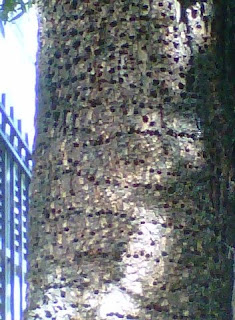 C.A.U.S.A. Festival Garden new raised beds
C.A.U.S.A. Festival Garden new raised bedsThis week I had the opportunity to spend 2 days at the C.A.U.S.A. Festival Community Garden in East New York, Brooklyn. C.A.U.S.A. stands for Citizen's Against Unnecessary Senseless Abuses.
The land has truly been abused over the years becoming dumping grounds for trash of all kinds. The neighborhood of East New York has had much vacant and which is just now beginning to be built on. Many folks cleaned up the lots and started community gardens on the vacant land and today East New York is one of the New York City neighborhoods that has a cluster of community gardens. A group of gardens joined together to create East New York Farms. This group of gardens grows vegetables intensively and sells at a farmers market in the neighborhood.
The C.A.U.S.A. Festival Garden is coordinated by Filiberto Ayala, a retired grandfather with a warm smile and an engaging manner. The garden is going through a renaissance as the gardeners are rebuilding raised beds and dressing up the areas along the fence. The garden has a collection of fruit trees, including cherry, peach, apple and pear. The peach tree was laden with fruit but unfortunately not yet ripe.
As part of the improvements we worked to install a Rainwater harvesting system collecting rainwater from an adjacent 3 story 800 square foot building. A 1000 gallon tank collectes the water for future use.
The gardeners collect found objects like the creature adorning the dead tree in the above photo and the large snail shell which will be turned into a planter in the photo below.
This community garden is an inspiration for anyone who visits. The community gardeners have much to protest and be angry about but they have channeled that energy into creating a community garden that is helping to improve the neighborhood while providing an outlet for community members to get involved. All this while also providing nutritious local produce for the neighborhood.






